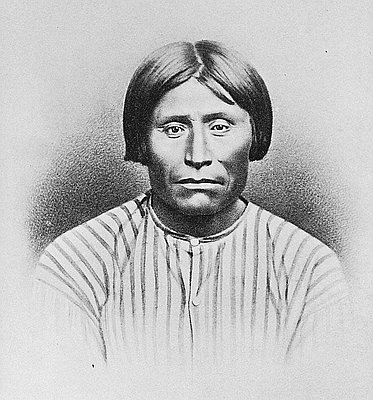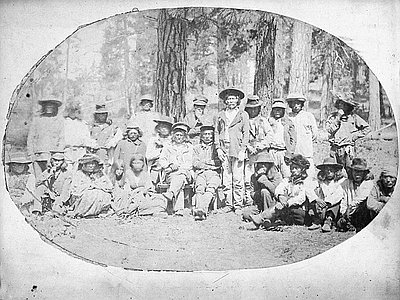On his expeditions to map the continent, Frémont needed the services of an able scout. Kit Carson, a mountain man who had covered much of the western territory trapping beavers for the fur trade, filled that bill perfectly. “Cool, brave, and of good judgment,” Frémont said of Kit Carson in his memoirs, “a good hunter and a good shot; experienced in mountain life, he was an acquisition, and proved valuable throughout the campaign.”
In 1845 as he prepared to make his third expedition, Frémont knew that he would need Carson’s services once again. War with Mexico over Texas, which was then an independent republic, appeared imminent. In the event of war, President James K. Polk intended to conquer Texas and take the southwestern states and California away from Mexico. Although the War Department considered Frémont’s expedition “of a scientific character, without any view whatsoever to military operations,” the explorer brought with him a well-armed contingent of sixty men, including Carson. And when his party came to California, Frémont lingered for months before proceeding to Oregon, as if awaiting new orders.
Although he did not know it, on April 24, 1846, the day that Frémont left Peter Lassen’s ranch in the Sacramento Valley heading north, hostilities between American troops and Mexicans on the Rio Grande finally broke out.
Camped beside Upper Klamath Lake, Frémont learned that a courier, Lieutenant A.H. Gillespie, was on his trail carrying messages from Washington, D.C. Immediately, the explorer formed a party consisting of Carson and nine other men to ride with him, beginning at daybreak, to meet the officer.
That fateful encounter, which occurred in a glade at the lake’s southern end, has long puzzled historians. Did Gillespie give Frémont instructions to invade California and wrest it from Mexico? His documents did not say so, nor could Gillespie have known that war with Mexico had begun, but he might have told him that war seemed inevitable. Did John Charles Frémont, who had made impetuous decisions before, decide on his own to return to California, bringing a militia that would decide its fate?
After questioning Gillespie, then staying up late by the campfire re-reading the letters, Frémont wrapped himself in his blankets, failing, for only the second time in his career, to post a sentry. Near dawn, the sound of an axe striking a man’s head awakened Kit Carson, who sounded the alarm. Indians, probably Modocs who had followed Gillespie, rushed the camp. Fighting back, Delaware Indians of Frémont’s party killed a leader of the war party and forced his men to flee.
The next day, in retaliation, Frémont and Kit Carson attacked and burned a Klamath village, killing 14 men. “I had kept the promise I had made to myself,” recalled Frémont, “and had punished these people well for their treachery, and now I turned my thoughts to the work they had delayed.”
© Stephen Most, 2003. Updated by OHP staff, 2014.









